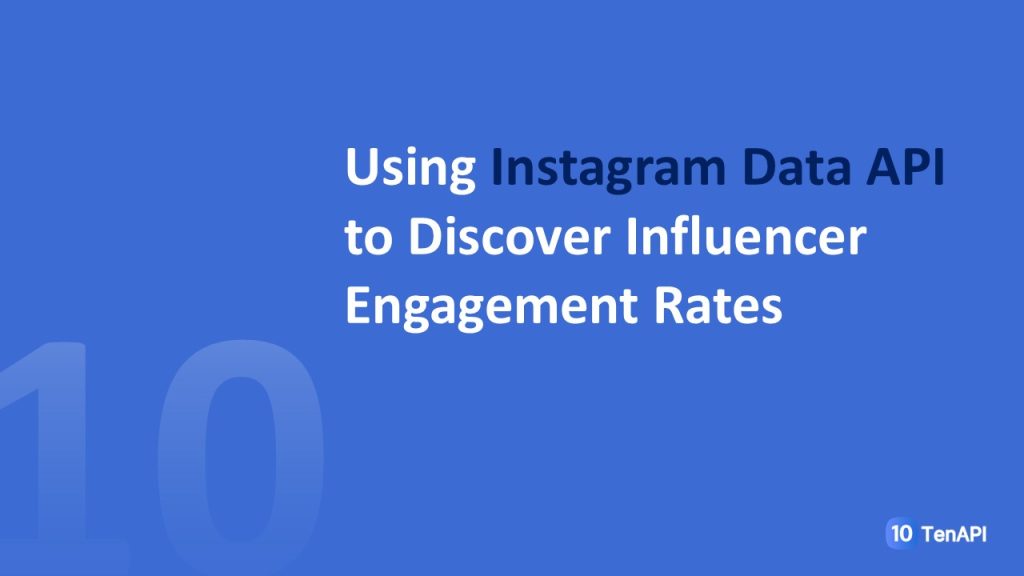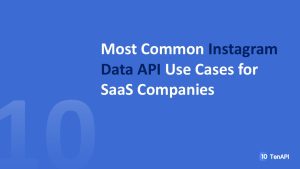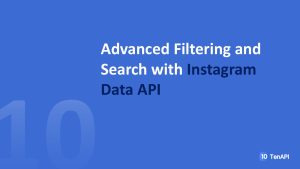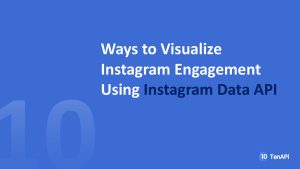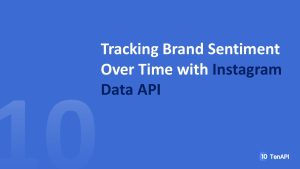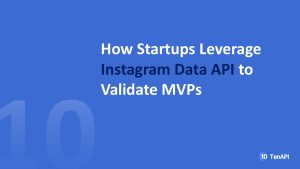In today’s digital marketing landscape, influencer marketing plays a crucial role in brand visibility and customer engagement. But how do marketers and brands objectively measure the success of their influencer partnerships? The key metric here is the influencer engagement rate — a powerful indicator of how effectively an influencer connects with their audience. Thanks to Instagram’s Data API, developers and marketers now have access to a treasure trove of data to calculate and analyze these engagement rates more precisely and efficiently.
Introduction to Instagram Data API and Influencer Marketing
What is Instagram Data API?
Instagram Data API is a set of programming interfaces that allow developers to programmatically access Instagram’s public and business account data. This includes media posts, comments, likes, follower counts, and other engagement metrics, which are essential for analyzing influencer performance.
Why Engagement Rate Matters in Influencer Marketing
Engagement rate measures how actively an influencer’s audience interacts with their content. Unlike follower count, engagement rate reflects genuine interest, providing brands with a clearer picture of ROI for influencer campaigns.
Understanding Influencer Engagement Rate
Definition and Importance
Engagement rate is generally calculated as the ratio of interactions (likes, comments, shares) to the total follower count, usually expressed as a percentage. A higher engagement rate indicates a more involved and loyal audience.
Common Metrics Used to Calculate Engagement
Likes
Likes are the simplest form of interaction and represent the audience’s immediate approval of content.
Comments
Comments reveal deeper engagement, showing that followers are not just passively viewing but actively participating.
Shares and Saves
Though less visible, shares and saves indicate strong interest and content value.
How Instagram Data API Helps in Measuring Engagement
Types of Data Accessible via Instagram API
With Instagram’s API, you can retrieve:
-
Media posts and their details
-
Comments and like counts
-
Audience demographics and insights
-
Follower counts and growth metrics
Key Endpoints for Influencer Analytics
The API exposes endpoints for user profiles, media objects, and insights which are crucial for calculating engagement.
Limitations and Rate Limits of Instagram API
Developers must be mindful of Instagram’s rate limits (number of requests per hour) and data privacy policies which might restrict access to some data.
Step-by-Step Guide to Using Instagram API for Engagement Rate
Setting Up Developer Account and Access Tokens
To start, create a Facebook Developer account, register your app, and obtain access tokens with the right permissions.
Fetching User Media and Insights
Use the API endpoints to gather recent posts, likes, comments, and other insights programmatically.
Calculating Engagement Rate Programmatically
Write scripts that calculate engagement rate as:
(Total Likes + Comments) / Total Followers * 100
Best Practices to Optimize API Usage for Accurate Data
Handling API Rate Limits
Implement request queuing and exponential backoff to avoid hitting limits.
Using Caching to Minimize API Calls
Cache results where possible to reduce redundant requests and improve speed.
Dealing with Incomplete or Missing Data
Have fallbacks or error handling for cases where some data points are unavailable.
Tools and Libraries to Simplify Instagram API Integration
Popular Python Libraries
Libraries like instagram-graph-api and Requests simplify API interaction.
Third-Party Platforms for Influencer Analytics
Platforms like Hootsuite, Sprout Social, and Later offer pre-built analytics powered by Instagram data.
Real-world Use Cases and Success Stories
Brands Using API Data for Campaign Optimization
Many brands track influencer engagement data in real-time to adjust their marketing strategies.
Influencers Monitoring Their Own Engagement
Influencers use API data to understand audience preferences and improve content.
Conclusion
Leveraging Instagram’s Data API to uncover influencer engagement rates empowers marketers to make data-driven decisions. By accessing real-time metrics and applying smart analysis, brands can ensure that their influencer partnerships deliver genuine value and measurable ROI. Mastery of API usage combined with best practices will elevate any influencer marketing strategy.
FAQs
Q1: Is the Instagram API free to use?
A: Yes, but it requires registration and adherence to rate limits and usage policies.
Q2: Can I access private user data via the API?
A: No, only public and business account data with proper permissions.
Q3: How often should I fetch engagement data?
A: It depends on your campaign needs but avoid excessive requests to stay within rate limits.
Q4: What if the API returns incomplete data?
A: Implement error handling and consider using caching to improve reliability.
Q5: Are there alternatives to Instagram’s API for influencer analysis?
A: Yes, various third-party tools provide analytics without direct API usage.

